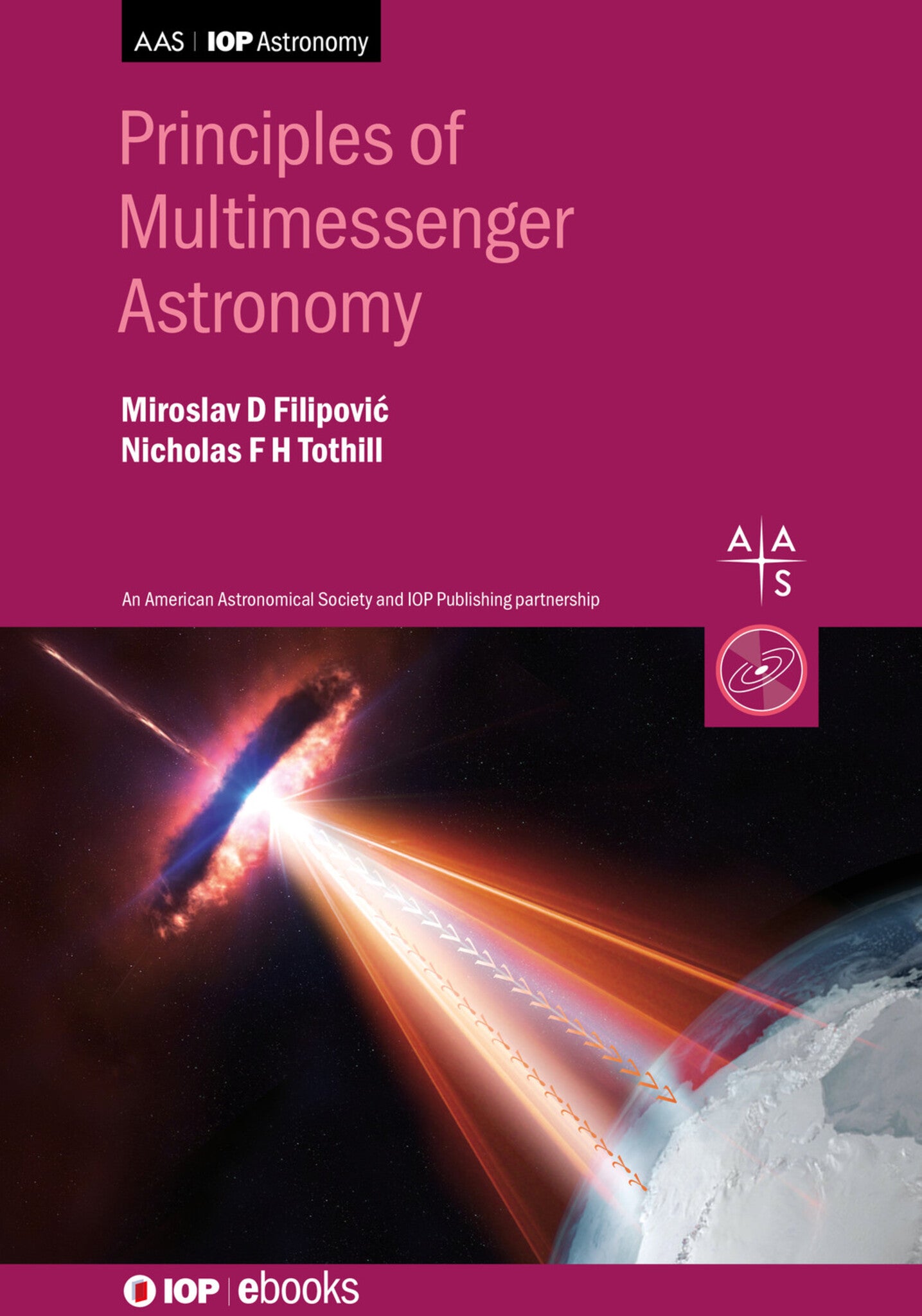We're sorry. An error has occurred
Please cancel or retry.
Principles of Multimessenger Astronomy

Some error occured while loading the Quick View. Please close the Quick View and try reloading the page.
Couldn't load pickup availability
- Format:
-
30 September 2021

Astronomy has traditionally relied on capturing photons from cosmic sources to be able to understand the universe. During the 20th and 21st centuries, different messengers have been added to the astronomer's toolset: cosmic rays, neutrinos, and most recently gravitational waves. Each of these messengers opens a new window on the universe, and a modern astronomer must be familiar with them. The goal of this book is to provide a broad understanding of these messengers and their relationship to each other. The unique physics of each messenger is introduced, as well as the physics of their detection and interpretation. An additional focus is the discussion of techniques and topics that are common to more than one messenger. Principles of Multimessenger Astronomy is designed to be both an introduction and reference to modern astronomy.
Key Features
- Provides a general reference for all astronomers interested in multimessenger observational astronomy and astrophysics, as well as a teaching resource
- Explores foundation topics that are useful across messenger and waveband boundaries
- Includes scientific history, and the operation and use of modern astronomical instrumentation
- Introduces the use of data from multiple messengers

SCIENCE / Space Science / Astronomy, Astronomical observation: observatories, equipment and methods

Multimessenger Astronomy has become a ‘buzzphrase’ since the publication in 2016 of the first measurements of gravitational waves. The basic sense was that the advent of measurements using gravitational waves had broken the monopoly of electromagnetic radiation in observational astronomy. This was known not to be strictly true, because information from outside the Earth had been received and interpreted in the form of cosmic rays since the first decades of the 20th Century, and neutrinos from the Sun and from supernova SN1987a had, before the turn of the millenium, opened another channel to our understanding of the wider Universe. In their textbook Principles of Multimessenger Astronomy, Miroslav Filipović and Nicholas Tothill aim to present a students’ systematic introduction to the sub-fields included in the term. As well as to physics students who want an introductory way into modern astronomy, the book should be of interest to graduate students in physics who are starting astronomical research. I have to admit that I found the colour of the printed text, grey rather than black, lacking in contrast. The use of colour in the illustrations generally works well, although some of the figures could have better contrast and sharpness. Taken overall the book would be a good addition to the libraries of astronomical institutions.
John Beckman, The Observatory, February 2023
Preface
Acknowledgements
Author Biographies
Foreword
1 Introduction to Multimessenger Astronomy: Fusing Intellect and Technology Through Telescopes
2 Electromagnetic Radiation
3 The Measurement of Cosmic Messengers
4 The Transfer of Electromagnetic Radiation Through Space
5 The Earth’s Atmosphere
6 Emission Mechanisms of Electromagnetic Radiation
7 Particle Astrophysics: Gamma Ray, Cosmic Ray, and Neutrino Astronomy
8 Gravitational Waves and Their Production
9 Obtaining and Interpreting Astronomical Data
Appendix A Appendix B Appendix C Appendix D Appendix E Appendix F Appendix G



